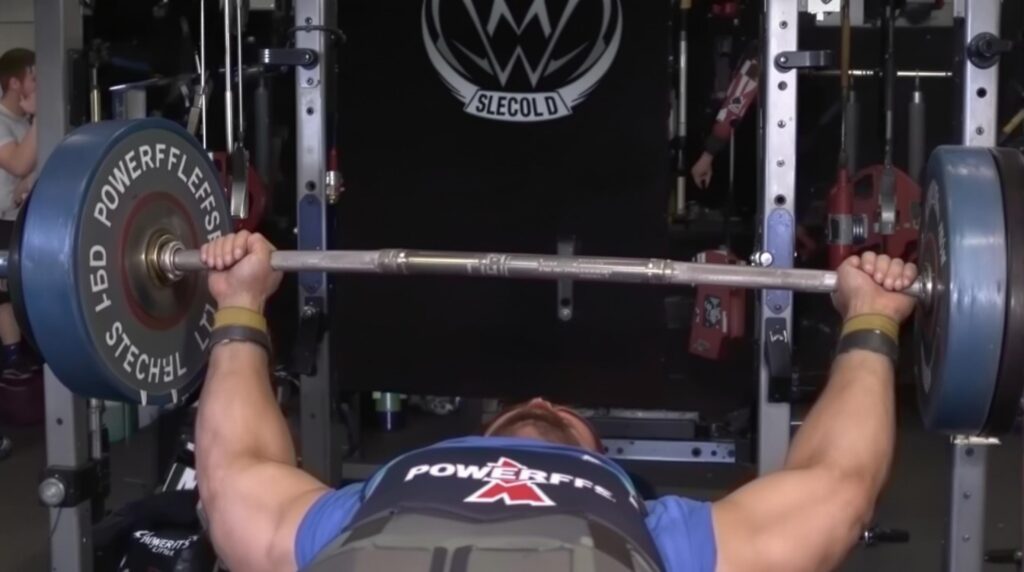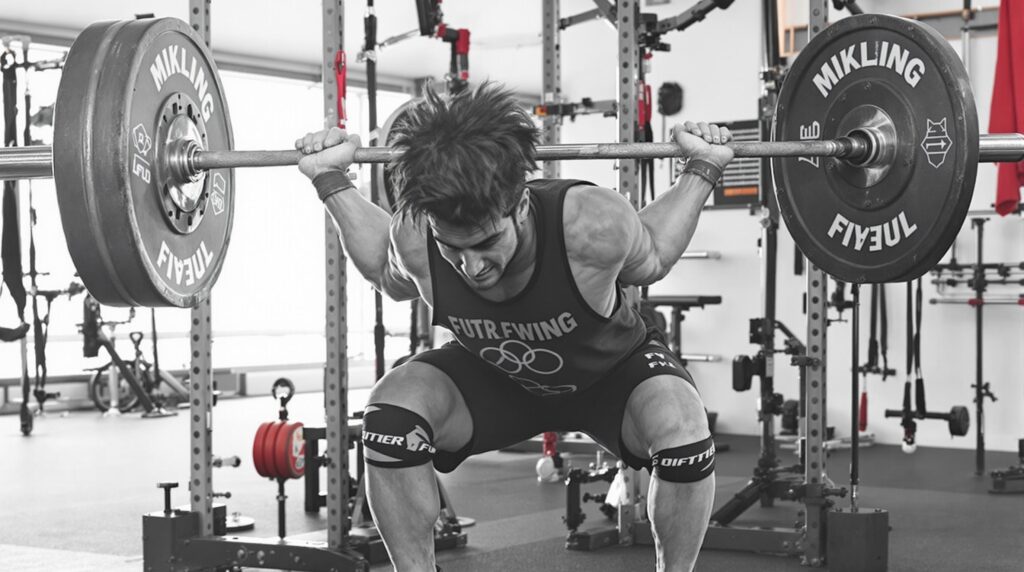The power clean is arguably one of the most effective compound exercises for developing explosive strength and enhancing athletic performance. This Olympic weightlifting movement has become increasingly popular in strength programs for athletes across various sports due to its remarkable ability to develop functional power that translates directly to sport-specific movements.
Key Takeaways
- Power cleans generate 3x higher power output (1,200W) compared to traditional strength exercises like squats and deadlifts
- Athletes can expect significant improvements in sprint times and acceleration after implementing power clean training
- The exercise effectively develops the posterior chain muscles while simultaneously enhancing core stability
- Power clean training improves vertical jump height and change-of-direction ability crucial for court and field sports
- Proper programming at 60-80% of 1RM maximizes power development and athletic transfer
What Makes the Power Clean a Superior Exercise for Athletes
The power clean stands apart from conventional strength exercises due to its unique biomechanical properties. Unlike slow-grinding movements like squats or deadlifts, the power clean demands explosive triple extension through the ankles, knees, and hips – a movement pattern that directly mimics athletic actions in sprinting, jumping, and change-of-direction movements.
Research has shown remarkable improvements in athletic markers, including 18% faster 40-meter sprint times and an 18% increase in squat strength after incorporating power cleans into training programs. Perhaps most impressively, power clean benefits for athletes include the ability to produce power outputs of 1,200W compared to just 400W for squats and 350W for deadlifts.
What truly differentiates the power clean is its capacity to simultaneously engage the posterior chain muscles, activate core stabilizers, and recruit fast-twitch muscle fibers in a single movement. This makes it an exceptionally time-efficient exercise for athletes with limited training time.

Explosive Power Development: The Primary Benefit for Athletes
The most compelling reason for including power cleans in an athletic program is their unmatched ability to develop power. Studies consistently demonstrate that power cleans generate three times higher power output than traditional strength exercises, with athletes capable of producing up to 1,200W during the second pull phase.
A 10-week power clean program has been shown to increase rate of force development (RFD) by 17-23% in novice lifters. This metric is particularly important for athletes as it measures how quickly they can generate maximum force – a key factor in sprinting, jumping, and other explosive movements common in sports performance training.
The power clean’s effectiveness stems from the “triple extension” mechanism, which recruits high-threshold motor units in the glutes, hamstrings, and quadriceps. Athletes training at 60-80% of their one-repetition maximum (1RM) show 28% faster muscle fiber recruitment compared to traditional strength training methods.
Interestingly, mid-thigh power clean variations generate 12-15% greater peak force (3,712W) than traditional power cleans due to optimized bar path mechanics, making them an excellent variation for athletes looking to maximize power output.
Sprint Performance and Acceleration Gains
For athletes in speed-based sports, the power clean offers significant sprint performance benefits. Rugby players have improved 10-meter sprint times by 0.15 seconds after just 7 weeks of power clean training, while track athletes have reduced 40-meter dash times by an impressive 18% using hang power clean protocols.
The correlation between power clean performance and sprint acceleration is remarkably strong (r = 0.86), confirming the direct transfer between barbell velocity and on-field speed. Soccer athletes implementing power cleans have increased step frequency by 9% during 20-meter sprints due to enhanced neuromuscular coordination.
The rapid hip extension pattern learned during power cleans enhances stride length and ground reaction forces, two critical components of sprint speed. This biomechanical transfer makes power cleans an ideal training tool for athletes in sports requiring bursts of acceleration.
Vertical Jump Height and Change-of-Direction Improvements
The power clean’s ability to enhance jumping performance makes it valuable for court and field sports. Collegiate volleyball players increased vertical jump height by 6.2 cm after 8 weeks of power clean training, while research shows power clean 1RM scores correlate strongly with countermovement jump height (r = 0.75).
For optimal jump-specific power development, a load of approximately 70% 1RM appears to maximize power output (3,604W). The exercise also improves reactive strength index (RSI) by 14%, a critical metric for basketball rebounds, volleyball blocks, and soccer headers.
The stretch-shortening cycle trained during the catch phase enhances elastic energy storage in tendons and ligaments, improving an athlete’s ability to quickly change direction. This adaptation is particularly beneficial for sports requiring rapid deceleration and acceleration in multiple planes of movement.
Core Stability and Posterior Chain Development
Beyond performance benefits, power cleans significantly contribute to injury prevention and structural integrity. The exercise increases bone mineral density by 5-7% in the lumbar spine and femoral neck through epiphyseal loading, reducing fracture risk in athletes.
Posterior chain activation during power cleans is impressive, with glutes reaching 78% of maximum voluntary isometric contraction (MVIC) and hamstrings at 65% MVIC. This activation has been shown to reduce anterior pelvic tilt by 12°, decreasing lower back strain and improving posture.
The rectus abdominis reaches 61% MVIC during the catch phase, while erector spinae co-contraction improves spinal stability under 1,500N compressive loads. This enhanced posterior strength has been linked to a 22% lower ACL injury risk in female athletes.
Athletes in combat sports like MMA report 27% fewer core-related injuries after integrating power cleans into their training regimens, highlighting the exercise’s value for trunk stability and injury resilience.
Improved Athletic Coordination and Motor Learning
The technical complexity of the power clean offers substantial neuromuscular coordination benefits. Athletes performing power cleans improve agility drill times by 9% through enhanced hip-knee-ankle synchronization, while novice lifters demonstrate 31% better movement economy in sport-specific tasks after just 6 weeks.
The clean’s four-phase cadence (first pull, transition, second pull, catch) refines proprioceptive feedback loops, elevating dynamic balance scores by 18% in gymnasts and figure skaters. This improved body awareness translates directly to better performance in technical sports.
Deceleration control during the catch phase reduces ACL strain by 28% during lateral cutting movements, a significant benefit for team sport athletes. NFL linebackers have improved tackle efficiency by 11% through eccentric clean training, demonstrating the practical on-field applications.
Hormonal Response and Body Composition Benefits
The power clean creates a favorable hormonal environment for adaptation. Growth hormone spikes 4.2x above baseline post-training due to high eccentric loads, while testosterone elevations persist for 48 hours, accelerating muscle protein synthesis rates.
From a body composition perspective, a 12-week power clean program reduces fat mass by 5.8% while increasing lean mass by 3.2 kg in recreationally trained individuals. This makes the exercise valuable not only for performance enhancement but also for physique development.
The total-body nature of the power clean creates a higher metabolic demand than isolated exercises, making it an efficient choice for athletes looking to maintain or improve body composition while focusing primarily on performance outcomes.
Programming Power Cleans for Maximum Athletic Transfer
To maximize the power clean benefits for athletes, proper programming is essential. Novice lifters should begin with lighter loads (60-70% 1RM) to master technique before progressing to heavier weights, while elite athletes can work at 80-90% 1RM to develop peak power outputs approaching 3,712W.
Velocity-based training targets of 1.3-1.5 m/s for bar speed help ensure that power development remains the primary goal rather than absolute strength. Variations can be implemented based on sport-specific needs:
- Hex Bar Jumps: Improve concentric impulse by 8% compared to barbell cleans
- Mid-Thigh Cleans: Maximize rate of force development (+24%) for sprinters
- Clean + Front Squat Complexes: Boost work capacity by 15%
Frequency considerations should account for the exercise’s high neural demand, with 1-3 sessions weekly being optimal for most athletes. Integrating power cleans early in a workout ensures optimal neural drive and technique execution when fatigue is minimal.
By strategically implementing power cleans and their variations within a periodized training plan, athletes can develop explosive power that transfers directly to their sport while building a robust foundation of strength, stability, and coordination.
Sources
menshealth.com – Power Clean Complete Guide
hammerathletic.com.au – Olympic Weightlifting and Its Effects on Power Performance



